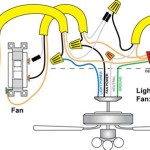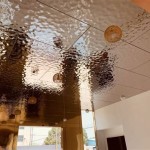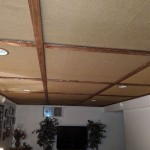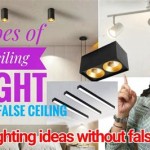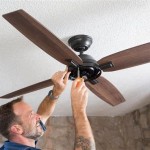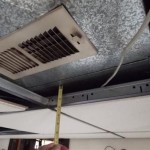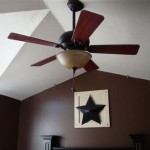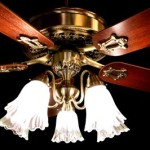Are Nail Pops in Ceiling Dangerous for Cats? A Comprehensive Guide
Nail pops, unsightly protrusions that emerge from drywall ceilings, are a common household nuisance. While often considered a cosmetic issue for homeowners, a pertinent question arises for cat owners: Do these seemingly harmless imperfections pose a risk to feline companions? This article explores the potential dangers nail pops in ceilings present to cats, examining the mechanisms of injury and providing practical advice for prevention and mitigation.
Nail pops occur when the drywall nails or screws securing the drywall sheets to ceiling joists gradually lose their grip. This can happen due to a variety of factors, including fluctuating humidity levels that cause the wood framing to expand and contract, improper installation techniques, settling of the house, or even vibrations from heavy traffic or construction nearby. The result is the fastener head pushing outward, creating a raised bump that may or may not be covered with crumbling joint compound.
The perceived danger to cats stems from several characteristics of nail pops: their sharp edges (if the joint compound is broken), their potential for dislodging and falling, and the accessibility of the ceiling itself to curious and agile felines. Understanding these factors is crucial in assessing the potential risks and implementing appropriate safety measures.
Potential Hazards Posed by Nail Pops to Cats
Nail pops, while seemingly minor, can present several potential hazards to cats, ranging from minor irritations to more serious injuries. The severity of the risk depends on the cat’s behavior, the condition of the nail pop, and the overall environment.
Firstly, a cat’s natural curiosity and playful nature often lead them to explore their surroundings, including elevated surfaces. Cats are adept climbers and jumpers, frequently accessing high vantage points like shelves, cabinets, and even ledges near the ceiling. If a cat jumps or climbs near a ceiling with nail pops, they risk coming into direct contact with these protrusions.
Secondly, the condition of the nail pop itself plays a significant role in determining the potential for injury. If the joint compound covering the nail pop has cracked or crumbled away, the exposed nail or screw head can present a sharp edge. A cat brushing against this sharp edge could suffer a scratch or puncture wound. While such injuries may be minor, they can be painful and prone to infection if not properly cleaned and treated. Furthermore, repeated scratches could lead to irritation and potential skin infections.
Thirdly, the instability of the nail pop also presents a risk. Loose nail pops can dislodge and fall from the ceiling. While the nail or screw itself is relatively small and lightweight, its impact could still startle or injure a cat, especially if the cat is underneath the falling object. A falling nail pop could land in the cat’s eye, causing corneal abrasions, or it could land on their nose or paws, causing minor wounds. The sudden noise and movement of the falling object could also frighten the cat, potentially leading to a panicked reaction and further injury.
Fourthly, the materials comprising the nail pop and the surrounding ceiling can introduce further hazards. The dust and debris associated with crumbling joint compound can be irritating to a cat’s respiratory system. Inhaling these particles can trigger allergic reactions or exacerbate existing respiratory conditions, such as asthma. Some older homes may also contain asbestos in their ceiling materials, which poses a significant health risk if disturbed. While asbestos is unlikely to be present in newer homes, it is crucial to be aware of the potential risk when dealing with older structures. Disturbing asbestos-containing materials can release harmful fibers into the air, which can cause serious lung diseases, including mesothelioma and lung cancer.
Finally, it is important to consider the potential for secondary hazards. If a cat injures itself on a nail pop, it may react by licking or scratching the wound excessively. This can further irritate the injury and increase the risk of infection. In some cases, the cat may even require veterinary attention, which can be costly and stressful for both the cat and the owner.
Factors Influencing the Risk Level
The extent to which nail pops pose a threat varies considerably depending on several factors, including the cat's personality, their access to affected areas, the severity and number of nail pops, and the home’s construction materials. Understanding these factors allows for a more precise assessment of the risk level and the implementation of targeted preventative measures.
A cat’s individual personality and behavior are key determinants of risk. An active and curious cat that enjoys climbing and exploring is more likely to encounter nail pops than a more sedentary cat that prefers to stay on the ground. Kittens, with their boundless energy and exploratory instincts, are particularly vulnerable. Similarly, cats that are prone to jumping or climbing onto high surfaces, such as shelves or cabinets near the ceiling, are at greater risk of coming into contact with nail pops.
Accessibility is another critical factor. If the ceiling with nail pops is in a room that the cat frequents and can easily access, the risk is higher. Conversely, if the ceiling is in a room that is off-limits to the cat or is difficult for them to reach, the risk is significantly reduced. Factors that influence accessibility include the presence of furniture that the cat can use to climb, the height of the ceiling, and the cat’s physical abilities.
The number and severity of nail pops also contribute to the overall risk. A ceiling with only a few minor nail pops is less hazardous than a ceiling with numerous large and exposed nail pops. The more sharp edges and unstable protrusions there are, the greater the chance of a cat encountering and injuring itself.
The age and construction of the home can also influence the risk level. Older homes may be more likely to have nail pops due to settling and fluctuating humidity levels. Furthermore, as previously mentioned, older homes may contain asbestos in their ceiling materials, which poses a significant health risk if disturbed. Newer homes are less likely to have nail pops and are unlikely to contain asbestos, but they may still have other potential hazards, such as dust and debris from construction.
Finally, the presence of other pets in the household can also influence the risk level. If there are other pets that are more dominant or aggressive, the cat may be forced to seek refuge in higher places, increasing their exposure to nail pops. Furthermore, competition for resources, such as food and water, can also lead to increased stress and anxiety, which may cause the cat to engage in more exploratory and risky behaviors.
Mitigation and Prevention Strategies
Given the potential dangers, proactive measures are essential to protect cats from injury. Addressing nail pops directly, restricting access to affected areas, and providing alternative outlets for feline behavior are all effective strategies.
The most effective solution is to repair the nail pops. This typically involves re-securing the drywall to the ceiling joists using screws, applying joint compound to cover the screw heads, and sanding the area smooth. While this can be a DIY project, it is often best left to professionals, especially if the ceiling is high or if there is a large number of nail pops. Professional repair ensures that the problem is properly addressed and that the ceiling is restored to a safe and aesthetically pleasing condition. It is crucial to address the underlying cause of the nail pops to prevent them from recurring.
If repairing the nail pops is not immediately feasible, restricting the cat’s access to the affected areas can be a temporary solution. This can be achieved by closing doors to rooms with nail pops or by using barriers to prevent the cat from accessing high surfaces near the ceiling. However, it is important to ensure that the cat still has access to essential resources, such as food, water, and litter box, and that they have alternative areas to explore and play.
Providing alternative outlets for the cat’s natural behaviors can also help reduce the risk of injury. Cats have a natural instinct to climb, scratch, and explore. By providing them with appropriate outlets for these behaviors, you can reduce their motivation to access potentially dangerous areas. Cat trees, scratching posts, and interactive toys can all help satisfy a cat’s natural instincts and keep them entertained.
Regularly inspect the ceiling for new or worsening nail pops. Early detection allows for prompt intervention, preventing minor issues from escalating into more significant hazards. Pay particular attention to areas where the cat is likely to spend time or where there are already existing nail pops.
Consider purchasing pet insurance. While this does not directly prevent injuries from nail pops, it can help cover the costs of veterinary care if the cat does suffer an injury. Pet insurance can provide peace of mind and ensure that the cat receives the necessary medical attention without straining the owner’s finances.
If dealing with an older home, it is crucial to test the ceiling materials for asbestos before undertaking any repairs or renovations. Asbestos testing is relatively inexpensive and can help prevent potentially serious health problems. If asbestos is present, it is essential to hire a qualified asbestos abatement contractor to remove or encapsulate the material safely.
Maintain a clean and dust-free environment. Regularly vacuuming and dusting can help remove dust and debris that may be irritating to the cat’s respiratory system. This is particularly important if the ceiling is crumbling or if there are signs of mold or mildew.
By implementing these mitigation and prevention strategies, cat owners can significantly reduce the risk of their feline companions being injured by nail pops in ceilings. A proactive approach, combined with regular monitoring and maintenance, is essential for ensuring the safety and well-being of cats in the home.

Simple Nail Scissors For Easy Grooming Cat Care Tips

Good Alternative To Declawing Your Cat Which Isn T Recommended Anymore Have You Ever Tried Softpaws Whatdoyouthink

Dave The Cat S Legendary Popsicle Adventure

Subcutaneous Fluids For Pets 101 Petmd
Necoichi Portable Stress Free 2 Cat Cage Carrier Waterproof Floor 20x20x31
Cosequin Feline Sprinkle Capsules 55 Count 4 Pack Costco

25 S You Ll Probably Want If Your Cat Is A Little Tyrant Sometimes

50 Ways To Entertain Your Cat Free Printable Meows N Paws

Anti Cat Scratch Furniture Protector 16 4ft X 11 8in Couch

Man Builds Amazing Cat Creations From Cardboard Petguide
Related Posts

